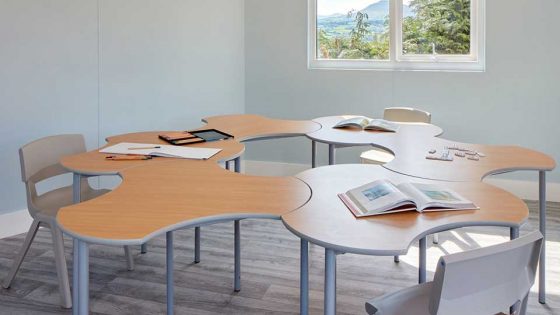The importance of equipping classrooms with the right tools cannot be overstated. For UK schools and colleges, the decision-making process can be intricate, requiring a balance of budget, quality, and future-proofing. Here’s a guide to the key considerations when sourcing classroom equipment solutions, based on input from delegates and suppliers at the Education Forum…
- Needs Assessment:
- Understand your objectives: Are you aiming for more tech-driven, interactive lessons, or reinforcing traditional teaching methods?
- Collaborate with stakeholders: Engage teachers, students, and administrative staff in discussions. Their input can provide valuable insights into the actual needs and gaps in the current set-up.
- Budget Constraints:
- Initial Costs vs. Long-Term Value: It may be tempting to opt for cheaper solutions, but consider the long-term value. Higher upfront costs might offer durability, reducing the frequency of replacements.
- Financing and Grants: Explore government grants or education-focused initiatives that might subsidise the costs.
- Quality and Durability:
- Reputable Suppliers: Choose suppliers known for quality. Requesting references or case studies can help.
- Warranty and Support: Ensure products come with a suitable warranty. Check if the supplier provides maintenance support or training sessions for more technical equipment.
- Technological Compatibility:
- Integration with Existing Systems: New equipment should be compatible with current tech infrastructure.
- Future-Proofing: Opt for solutions that can adapt to future technological advancements. This ensures the equipment remains relevant and usable for years.
- Flexibility and Multi-functionality:
- Versatile Equipment: Items that serve multiple purposes can be cost-effective and space-saving. For instance, interactive whiteboards that can function as both a projector screen and a touch-sensitive board.
- Adaptable for Different Age Groups: Equipment should cater to a range of age groups, especially if the institution hosts multiple year groups.
- Safety and Compliance:
- Regulations: Ensure that all equipment adheres to UK safety standards.
- Installation Safety: If equipment requires installation, ensure it’s done safely, securely, and doesn’t pose any hazards.
- Environmental Considerations:
- Sustainability: Opt for suppliers with a clear environmental policy. Equipment should be energy-efficient and, where possible, made from sustainable or recycled materials.
- Disposal of Old Equipment: Ensure there’s a plan for disposing of or recycling old equipment in an environmentally-friendly manner.
- After-sales Support:
- Training: Especially for tech solutions, ensure that teachers receive adequate training to maximise the equipment’s potential.
- Maintenance and Repairs: Understand the protocol if things go wrong. Having a local or easily reachable support service is crucial.
Sourcing classroom equipment for UK schools and colleges is a significant investment in the future of education. By taking a comprehensive approach, considering both immediate needs and long-term implications, institutions can create an enriching, dynamic, and safe learning environment for all their students.
Do you require classroom equipment for your school or college? The Education Forum can help!
Image by Juraj Varga from Pixabay






Leave a Reply